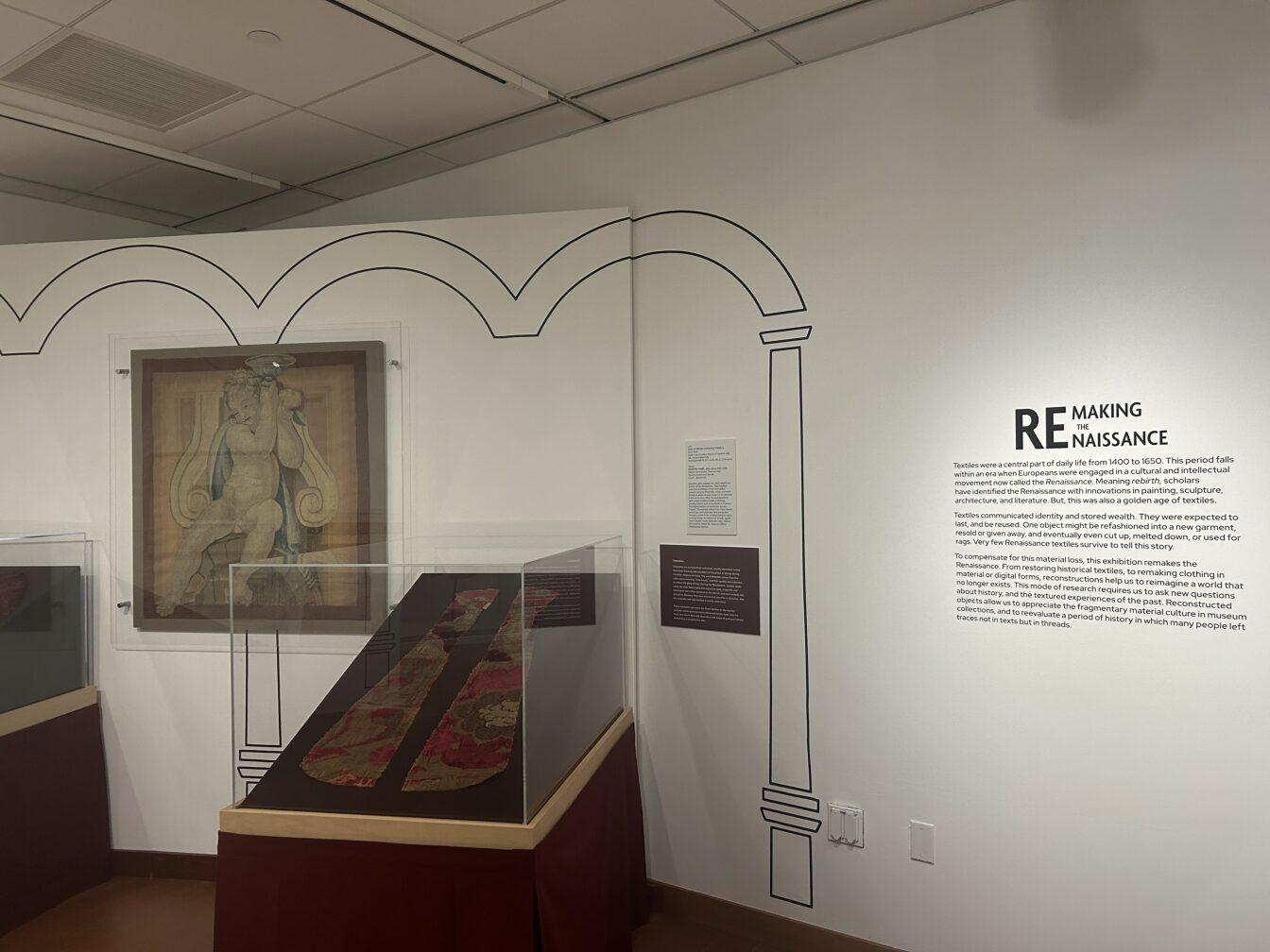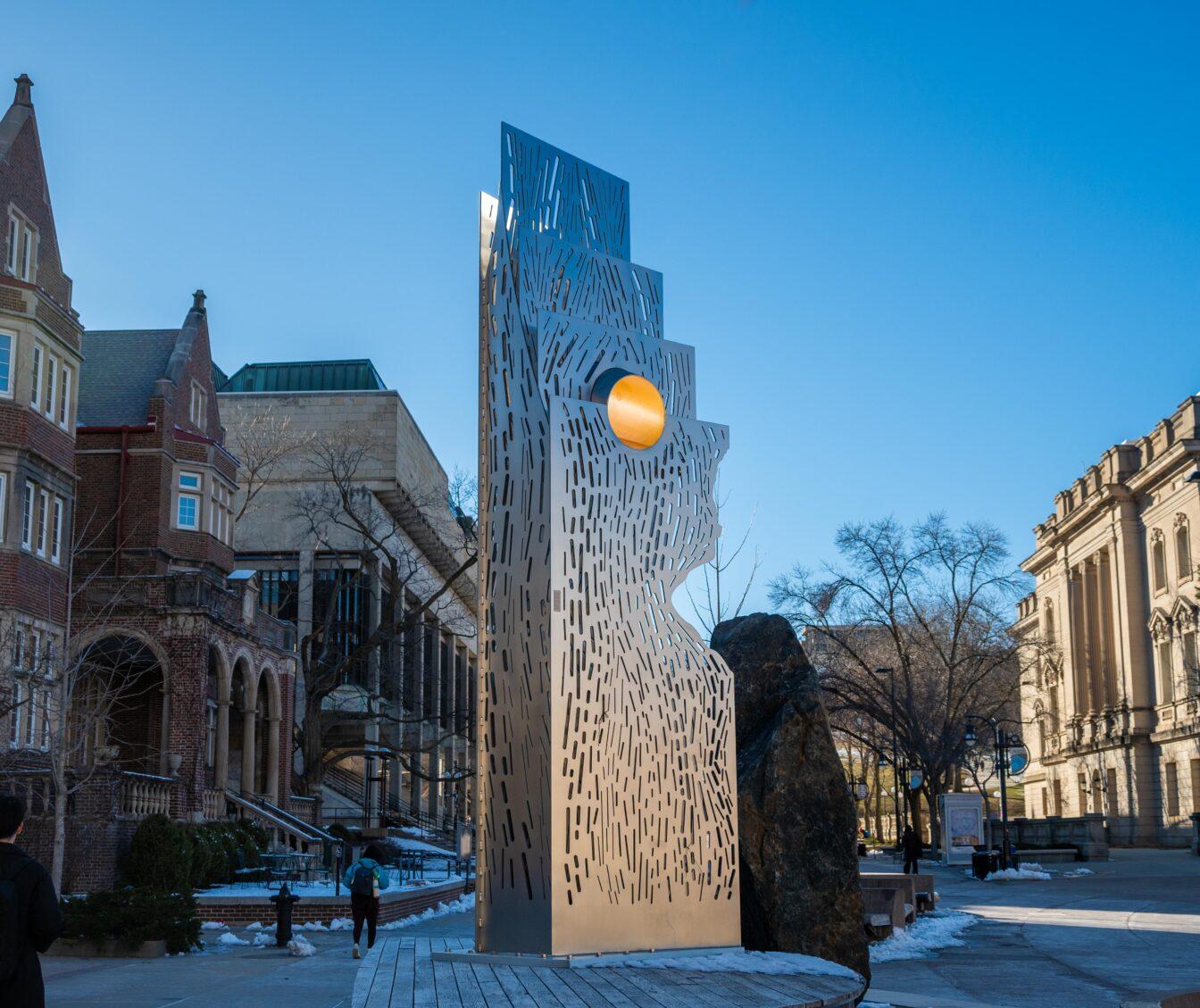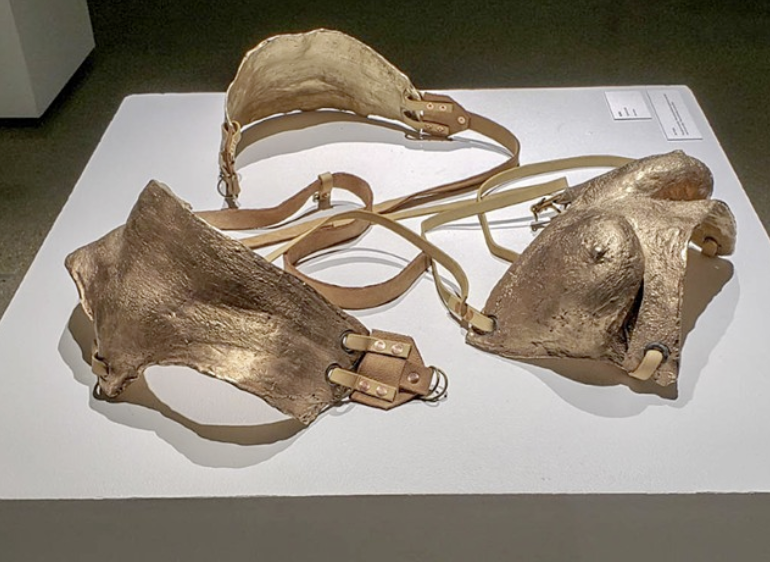The University of Wisconsin School of Human Ecology unveiled its newest exhibition, ‘Remaking the Renaissance,’ curated by Textile Specialist and Research director for the Helen Louise Allen Textile Collection, Dr. Sophie Pitman.
The exhibition offers a new point of view on this iconic period of fashion history by showing that lost materials can be revived through conservation and research according to the Center for Design and Material Culture website.
It also offers a new perspective on the traditional idea of the Renaissance period.
“We tend to associate the Renaissance with other kinds of art, like oil paintings, sculpture, architecture, and I think that textiles need to be reinserted back into that story because they were an art form,” Pitman said. “They were something that people invested huge amounts of effort and skill and money in. But they also were a really important part of daily life and fashion.”
But unlike the other art forms from the Renaissance, textiles rarely survived, which in turn made it more difficult to study.
For Pitman, that was the impetus for creating this exhibition, which is a culmination of recent and past projects. She had been researching related ideas and questions for 5 to 10 years.
“What I wanted to do with this exhibition is remake the Renaissance in two ways,” Pitman said. “One is to insert textiles back into the story of the sort of cultural phenomenon that was the Renaissance, but also talk about how we can remake some of these objects, how we can combat the problem of the loss that we see in textiles. Textiles are particularly fragile because they’re so sensitive to light and humidity.”
Fortunately, the University has an extensive collection of resources that helped guide the research.
Remaking the Renaissance uses textiles from the Helen Louise Textile Gallery, a teaching collection with over 13,000 textiles encompassing 16 centuries and 108 countries. This makes it one of the nation’s largest university-held textile collections.
The UW’s special collections also played an important role in the research. One text was “The Book of Secrets,” which is a book that gave recipes for fakes and imitations of luxury items, including how to make fake leopard skin and amber.
At the time, laws were passed that prohibited certain social classes from wearing specific items. Recreations of these fake items are displayed side-by-side to the real ones in the exhibition.
The exhibition displays not only original textiles that are over 500 years old but also recreated clothing items like a doublet.
Before creating the doublet, researchers first had to find an actual subject from the period. They looked at archival records and economic documents. Their subject was a water seller who died in a pandemic in 1631. Upon his death, his children had to make a list of everything he owned.
Behind the reconstructed doublet are blown-up words from that list that say, “this is a doublet of black-stamped mockado and it’s in a nasty condition.”
“From those words, we made this,” Pitman said, pointing to the clothing item. “We have to take loads of different sources, historic documents, we did scientific testing of fragments of the textiles that survived and dye analysis and we worked with lots of really amazing makers through the school of historical dress.”
It also displays three original styles of textiles with their respective recreations. Two were done by UW students.
The exhibition offers a perspective of what textiles during the Renaissance period were really like.
As someone who has always been interested in that historical period, learning more about what people — not just those depicted in art — wore made that period in time easier to understand.
The research also goes two ways. Not only are they looking at sources to recreate textiles but their recreations also help researchers understand sources better.
For Pitman, this gallery is not the end of this work, it’s the beginning.
“I don’t want this to be like the last word on it,” Pitman said. “You kind of want people to come and take inspiration and think, especially on a campus so UW people have so many different levels of expertise in different disciplines.”
Pitman also points out that although this exhibition focuses on the past, it’s also about the present and the future — and Madison.
The exhibit features loans from the Chazen Museum of Art, natural dyes made from plants in the Allen Centennial Garden and books from UW’s special collections.
“Yes, it’s about Europe 500 years ago, but it’s also really about Madison in 2024, and I think that’s really cool,” Pitman said.
The Center for Design and Material Culture will hold an opening reception for the exhibit Feb. 22 from 6:30 p.m. to 8:00 p.m, which will follow the 2024 Ruth Ketterer lecture. Dr. Pitman will also hold ‘curator gallery talks’ on March 5, April 3 and May 9.
The exhibition runs from Feb. 7 to May 19 at the Lynn Mecklenburg Textile Gallery in Nancy Nicholas Hall.



















